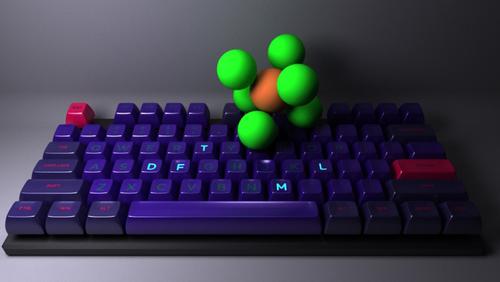当前位置:
X-MOL 学术
›
Isr. J. Chem.
›
论文详情
Our official English website, www.x-mol.net, welcomes your
feedback! (Note: you will need to create a separate account there.)
What's Left for a Computational Chemist To Do in the Age of Machine Learning?
Israel Journal of Chemistry ( IF 2.3 ) Pub Date : 2021-04-15 , DOI: 10.1002/ijch.202100016 Heather J. Kulik 1
Israel Journal of Chemistry ( IF 2.3 ) Pub Date : 2021-04-15 , DOI: 10.1002/ijch.202100016 Heather J. Kulik 1
Affiliation

|
Machine learning (ML) has become a central focus of the computational chemistry community. I will first discuss my personal history in the field. Then I will provide a broader view of how this resurgence in ML interest echoes and advances upon earlier efforts. Although numerous changes have brought about this latest wave, one of the most significant is the increased accuracy and efficiency of low-cost methods (e. g., density functional theory or DFT) that have made it possible to generate large data sets for ML models. ML has also been used to bypass, guide, or improve DFT. The field of computational chemistry thus finds itself at a crossroads as ML both augments and supersedes traditional efforts. I will present what I believe the role of the computational chemist will be in this evolving landscape, with specific focus on my experience in the development of autonomous workflows in computational materials discovery for open-shell transition-metal chemistry.
中文翻译:

在机器学习时代,计算化学家还能做什么?
机器学习 (ML) 已成为计算化学界的中心焦点。我将首先讨论我在该领域的个人历史。然后,我将提供更广泛的观点,说明机器学习兴趣的复苏如何与早期的努力相呼应并取得进展。尽管这一最新浪潮带来了许多变化,但最重要的变化之一是低成本方法(例如密度泛函理论或 DFT)的准确性和效率的提高,这使得为 ML 模型生成大型数据集成为可能。ML 也被用来绕过、引导或改进 DFT。因此,计算化学领域发现自己处于十字路口,因为 ML 增强并取代了传统的努力。我将介绍我认为计算化学家在这个不断发展的领域中的作用,
更新日期:2021-04-15
中文翻译:

在机器学习时代,计算化学家还能做什么?
机器学习 (ML) 已成为计算化学界的中心焦点。我将首先讨论我在该领域的个人历史。然后,我将提供更广泛的观点,说明机器学习兴趣的复苏如何与早期的努力相呼应并取得进展。尽管这一最新浪潮带来了许多变化,但最重要的变化之一是低成本方法(例如密度泛函理论或 DFT)的准确性和效率的提高,这使得为 ML 模型生成大型数据集成为可能。ML 也被用来绕过、引导或改进 DFT。因此,计算化学领域发现自己处于十字路口,因为 ML 增强并取代了传统的努力。我将介绍我认为计算化学家在这个不断发展的领域中的作用,









































 京公网安备 11010802027423号
京公网安备 11010802027423号